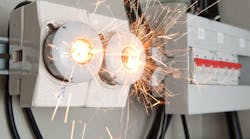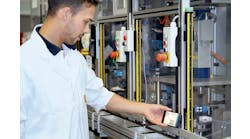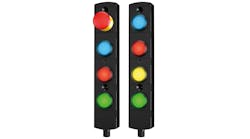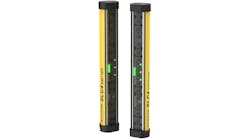When I was looking after a 1.7-million-sq-ft distribution warehouse for a Canadian company, management looked to me for guidance, advice and implementation of automation and control systems.
Major project work was being done in the early 2000s, which was the first major project in 40 years, so the normal course of business would be to figure out what was new and what the project had to have in order to meet current requirements. Safety was the top line item.
Pre-startup routine (PSR) documentation was required by the consulting engineer, so we needed safety programmable logic controllers (PLCs), safety relays and standard operating procedures (SOPs) to document recovery issues. The new cabinets and controls had to include everything needed to keep the process and the operating people safe.
So, where to start? The PSR dictated what we needed but not how to implement. That was on us, or, in effect, me.
A safety-hardware supplier was selected. One of the reasons why was because it had a safety camera where zones could be allocated to keep people away from pinch points between a moving track with carts. Should one of the carts lose its way, anyone in the area would have been blocked in against a wall or another cart.
This PSR requirement turned out to be a real issue and an implementation problem.
The camera was not cheap. It needed to be installed 35 ft in the air to have the required scope of detection. But we persevered, had the camera installed and then configured it to shut down the automation system when the required safety boundaries were violated.
Yippee, we did it.
“Not so fast,” said the production team, which was noticing that the track that moved the products from storage to trucks and secondary storage was not meeting production requirements—measured by the amount of cubic feet moved out the door.
You could imagine how nice the operations folks were when they were letting us engineering peeps know about how they will not meet their bonuses.
The real problem was that, when something happened on the track, it normally happened on an outbound curve. The system was old, and carts regularly jumped the track and needed to be put back onto the track. To do this, the production people had to walk through the area protected by the camera and shut all things down. The main track fed the whole outbound system.
Fast forward 15 minutes and the system was back up and running. Not ideal, but it met the PSR.
An hour of downtime meant that remote stores would not get their products. Customers get angry, and profits suffer. It’s a perfect storm for getting people really ticked off.
We actually had to get a signoff from the original engineer saying that it was feasible to do technically but was not feasible for recovery and thus was removed from the PSR.
Sensing devices for process and people safety vary in function and form factor. Safety-rated devices have to be used, which makes a normal e-stop a non-standard e-stop. Redundant contact blocks are required. Wire break technology needs to be used. Redundancy everywhere is required.
PSR requirements are very specific and can be a little fussy, if you will, in their application. The problem is liability. If someone gets hurt because the area was unsafe, you land in dirty water. The vendor, supplier, engineering staff and the company management can be a target for legal proceedings.
Production over safety? It happens all the time. We had to have a door sensor on a wrapper that shut down the wrap when it was opened. This is a must. There’s nothing stopping someone from entering and having a second person close the door and start things up.
We had to use a light curtain, which detects movement regardless of height. You can’t use a reflector to fool them. A person could actually walk up the conveyor into the path of the wrapper and get nailed. Some might say you can’t fix stupid, and the PSR said that had to be protected against.
And it worked well.
Leading into an area where barcodes were read for the warehouse control system, a door had a magnetic switch on it to shut down the incoming track system should a person enter the area.
The safety PLC did its job by shutting the systems down. It happened far too often, so, as you can guess, the magnet was cable-tie-wrapped to the sensor to solve the issue.
Presence-sensing devices used in safety systems can be material-sensing, light-sensing, movement- and physical-sensing. The implementation of these devices requires intelligent processing. If they can be easily short-circuited, then they can’t do the job. Critical thinking is required here.





